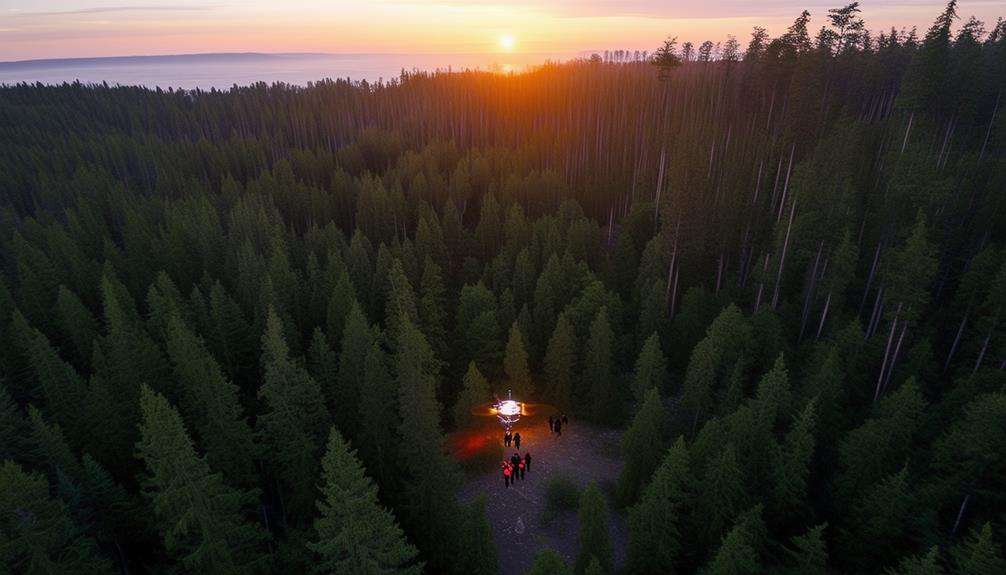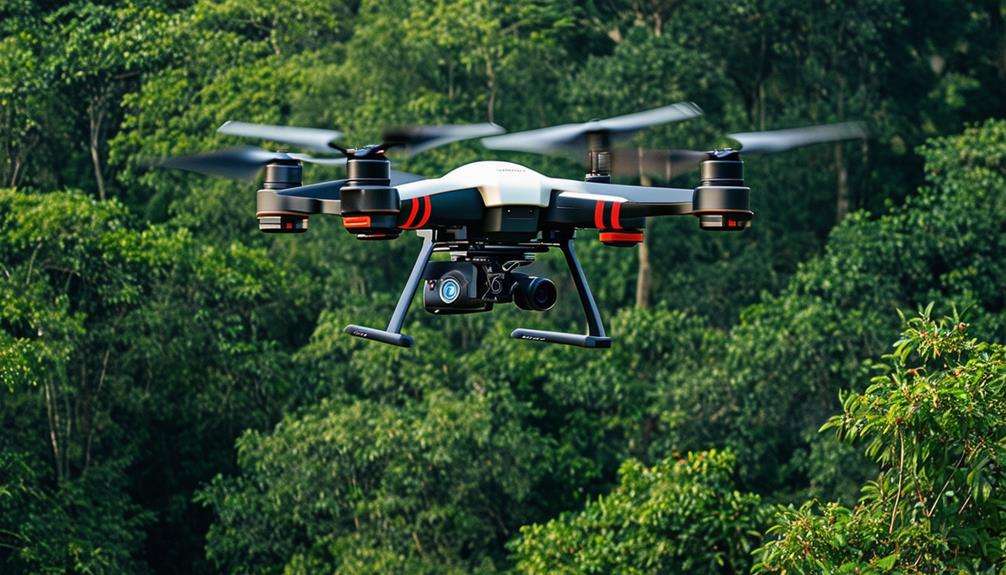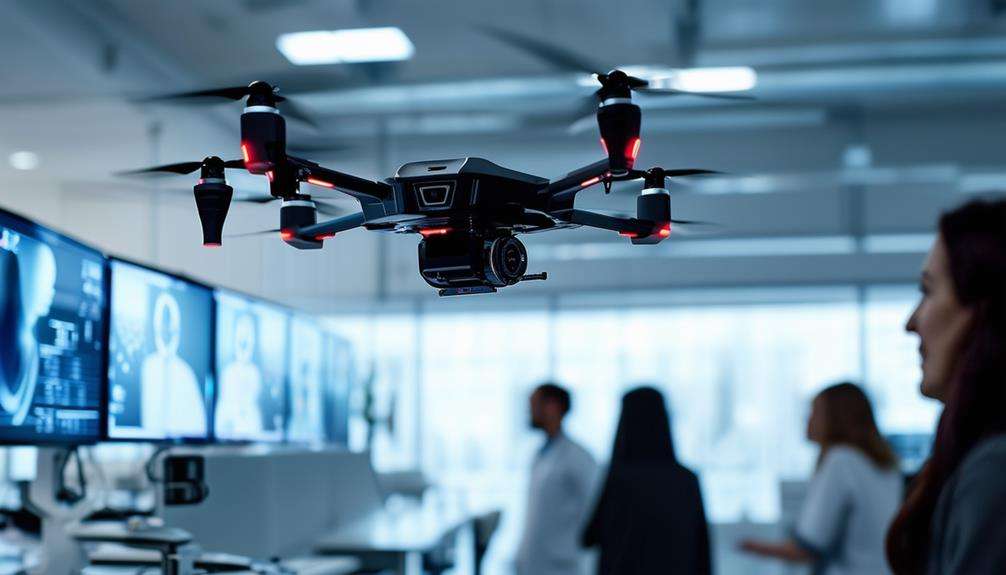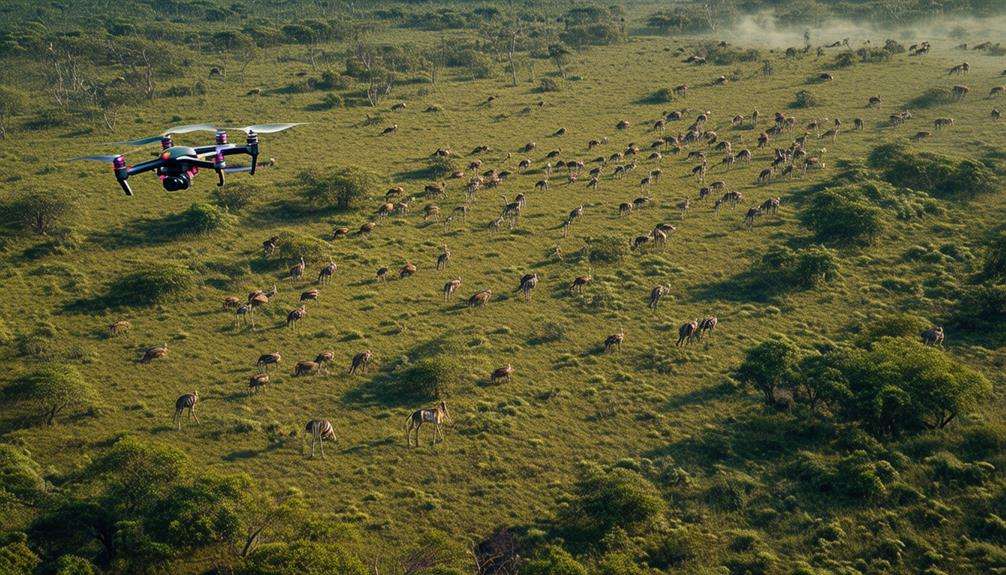When Did Drones Become Legal?
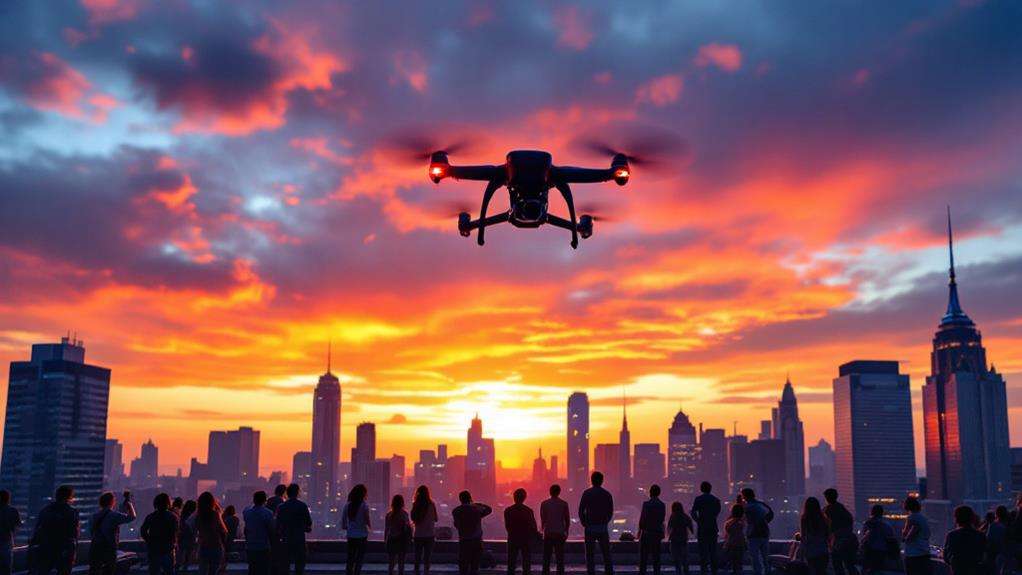
Drones became legally recognized for commercial use in the U.S. when the FAA first issued permits in 2006. This was a pivotal moment, starting the regulatory process that would evolve over time to manage drone use. The FAA Modernization and Reform Act of 2012 and subsequent Part 107 regulations in 2016 laid down comprehensive rules for their safe operation. These milestones enabled significant industrial applications, from agriculture to filmmaking. By 2023, over 871,000 drones were registered, reflecting their integration into various sectors. To uncover the fascinating journey of drone legalization and its impact, there's much more to explore.
Key Takeaways
- The FAA issued the first commercial drone permits in 2006, marking the start of legal drone operations.
- The FAA Modernization and Reform Act of 2012 mandated drone integration into national airspace, establishing a regulatory framework.
- Part 107, introduced in 2016, set comprehensive rules for commercial drone operations, enhancing safety and legal use.
- The 2020 regulatory expansion allowed drones for package delivery and night flights, broadening legal applications.
- As of 2023, over 871,000 drones were registered in the U.S., reflecting increased legal acceptance and usage.
Early Drone Innovations
How did early drone innovations set the stage for modern technology? Imagine you're witnessing the first flight of an early quadcopter in 1907, created by Jacques and Louis Bréguet. This pioneering aerial vehicle was an innovative leap in the burgeoning field of unmanned aerial vehicles (UAVs). Although it only lifted two feet off the ground, requiring four men to stabilize it, this initial flight was a significant milestone. It marked the birth of drone technology as we know it today. The Bréguet quadcopter wasn't just a novel experiment. Its design laid the groundwork for future advancements in drones. You can appreciate how this early innovation influenced modern quadcopter designs that are now widely used for various purposes. Working alongside Charles Richet, despite his controversial reputation, the Bréguet brothers pushed the boundaries of what was possible at the time. As drone technology evolved over the decades, transistor technology in the 1960s played a crucial role in making remote-controlled aircraft more accessible, leading to the rise of consumer drones. As you consider the evolution of aerial vehicles, it's clear that these early steps were crucial. They set a foundation that allowed for the development of more sophisticated drones, eventually leading to the remote-controlled UAVs we see today. This historical perspective highlights the importance of early experimentation in shaping the technology that surrounds us.
First Commercial Use
Building on early innovations and growing interest in non-military applications, the commercial use of drones took a significant step forward when the FAA issued the first commercial drone permits in 2006. This marked a pivotal shift in regulatory focus, opening new avenues for businesses to explore drone technology beyond military confines. Initially, the demand for these permits was low, as industries were just beginning to recognize the potential of drones for commercial applications. However, curiosity and experimentation quickly fueled interest, leading to an increase in permit requests. These early adopters were able to leverage autonomous flight capabilities to improve efficiency and reduce manual control, thus enabling broader use cases across various sectors. As commercial applications expanded, the FAA responded by adapting its regulations to provide a structured framework for these new ventures. The 2013 FAA reauthorization bill played a key role, allowing for more expansive use of drones across various industries. By 2016, the FAA introduced Part 107, which laid out the first set of comprehensive rules for commercial drone operations. These rules included essential components like pilot certification and operational guidelines, ensuring that operators were adequately trained and drones were used safely. With these evolving regulations, the groundwork was laid for integrating drones into the commercial sphere, setting the stage for future advancements and widespread adoption.
Key Regulatory Changes
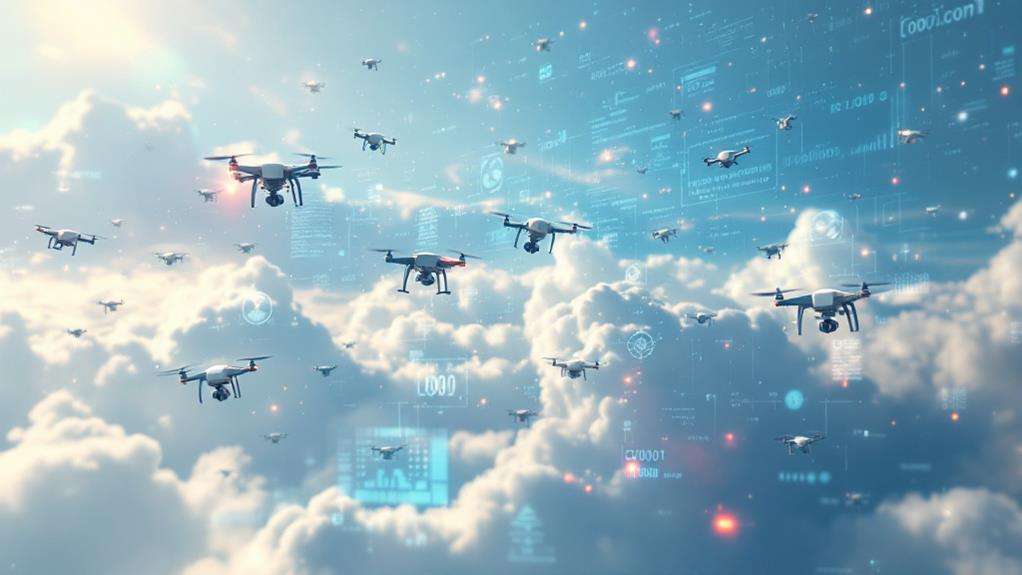
As commercial drone use gained momentum, the regulatory landscape evolved to support and manage this burgeoning industry. It all began in 2006 when the Federal Aviation Administration (FAA) issued the first commercial drone permits, allowing legal drone operations beyond military applications. This marked a significant step in establishing a formal drone program in the U.S.
The FAA Modernization and Reform Act of 2012 was a pivotal moment, as it mandated the integration of drones into the national airspace. This act laid the groundwork for developing regulatory frameworks necessary for safe and widespread drone use. In 2015, the FAA introduced Part 107, the first comprehensive set of rules governing commercial drone operations. These regulations outlined how you could legally fly drones, focusing on safety and operational guidelines.
In 2020, the FAA expanded drone operations even further to include package delivery and night flights. This expansion not only broadened the scope of drone use but also demonstrated the growing acceptance of drones in various sectors. By early 2023, over 871,000 drones were registered in the U.S., showcasing the industry's growth under clear regulatory oversight. These key changes have shaped a thriving drone ecosystem today.
Technological Breakthroughs
Drones have soared to new heights thanks to remarkable technological breakthroughs that have redefined their capabilities and applications. Since the FAA issued its first commercial drone permits in 2006, there's been a tremendous evolution in drone technology, which has played a crucial role in legalizing their use. The advancement of sensors, GPS, and battery technology has empowered drones to perform complex tasks efficiently, transforming industries from agriculture to filmmaking.
A pivotal moment came with the FAA's introduction of the Part 107 regulatory framework in 2016, which set clear guidelines for commercial drone operations. This framework provided the necessary structure for safe and efficient use of drones, making it easier for businesses to integrate them into operations.
| Year | Milestone | Impact on Drones |
|---|---|---|
| 2006 | First commercial drone permits | Shift towards legalizing non-military use |
| 2013 | Expanded drone use in commercial sectors | Broadened applications across industries |
| 2016 | Part 107 rules for commercial operations | Established a regulatory framework |
| 2019 | Introduction of Remote ID rules | Enhanced safety and integration into airspace |
| 2020 | Expansion to package deliveries, night ops | Increased capabilities and operational scope |
In 2019, Remote ID rules further enhanced airspace safety by requiring drones to transmit information, ensuring they're safely integrated into shared airspace. These technological advances continue to push the boundaries of what's possible with drones today.
Legal Milestones
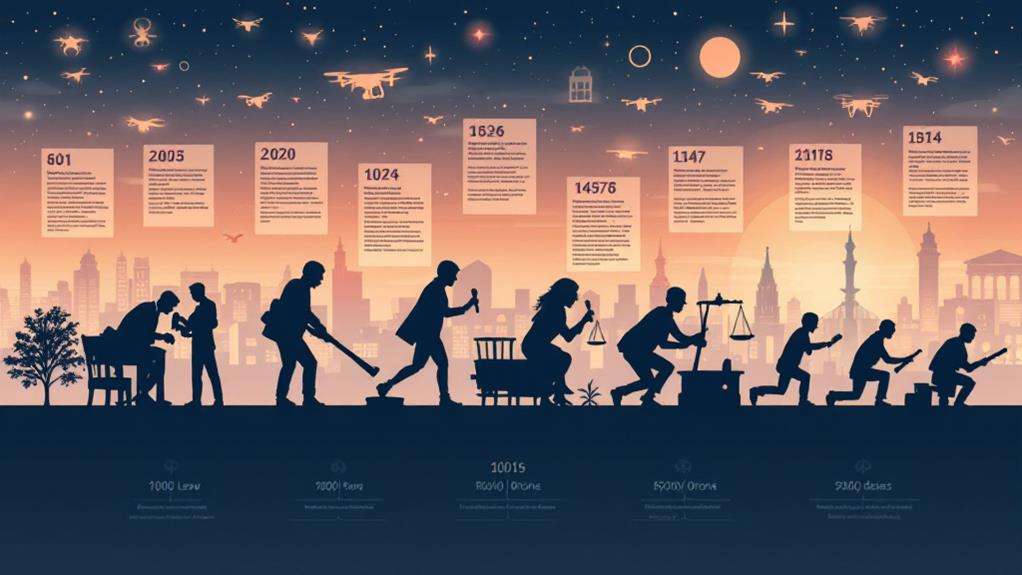
The journey of drones into legal legitimacy has been marked by key legal milestones that transformed how they operate in the skies. It all began in 2006 when the FAA issued the first commercial drone permits. This was a groundbreaking moment, as it set the stage for more structured drone operations in the United States. Fast forward to 2012, the FAA Modernization and Reform Act mandated the integration of drones into the national airspace, essentially laying the groundwork for a comprehensive regulatory framework.
By 2015, the FAA established the first set of rules for commercial drone operations under Part 107. These rules included essential guidelines for pilot certification and operational limitations, ensuring that drone operations remained safe and efficient. In 2019, the remote identification rule was proposed, enhancing the tracking and accountability of drones, which was crucial for maintaining order in increasingly crowded skies.
In 2020, the FAA expanded the scope of drone operations to include package delivery services and night flights. This expansion further legitimized the use of drones in commercial applications, demonstrating a significant shift towards embracing drone technology as a viable option for various industries.
Industry Applications
With drones now fully integrated into the legal landscape, you're seeing them transform industries across the board. The issuance of the first commercial drone permits in 2006 paved the way for a myriad of applications, with the 2013 FAA reauthorization bill acting as a catalyst for further industry usage. Today, drones are not just flying gadgets; they've become invaluable tools in fields like agriculture and logistics.
In agriculture, drones equipped with advanced sensors and cameras enable precise monitoring of crops, optimizing yields and reducing waste. Drone photography offers farmers a bird's-eye view, providing data crucial for making informed decisions. Logistics, on the other hand, has seen a revolution with drones facilitating efficient package deliveries, especially in remote areas. This expansion was further solidified by the 2020 FAA rules permitting night flights and delivery operations, broadening the commercial potential of drones.
Future Prospects
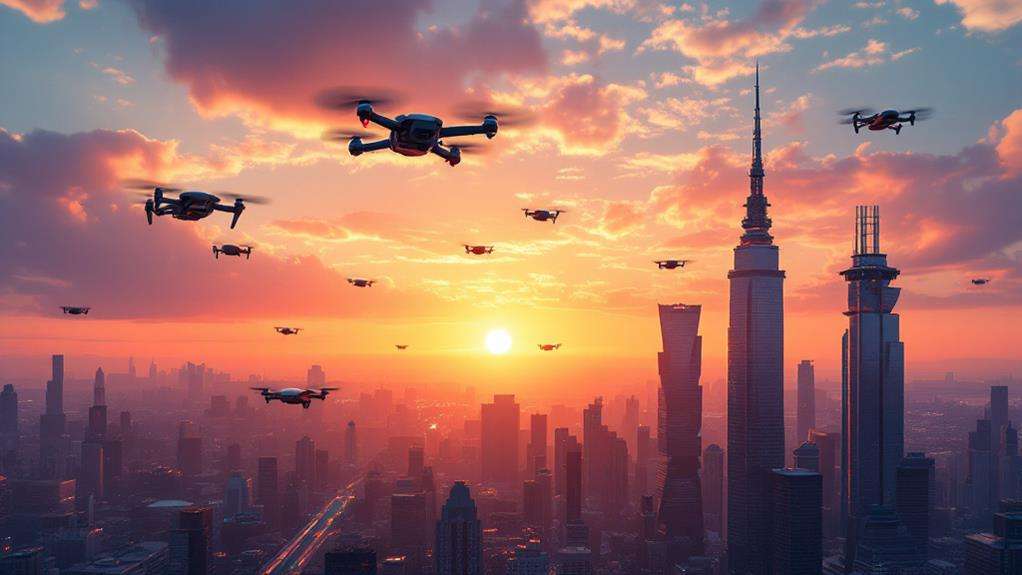
As industries continue to harness drone technology, the horizon is filled with promising prospects. Since the FAA's first rules for commercial drone operations in 2015, drone use has steadily climbed, showcasing an evolving landscape of legalization. The FAA Modernization and Reform Act of 2016 further cemented drones' role in national airspace, setting the stage for broader legal applications. By 2023, over 871,000 drones were registered in the U.S., highlighting the growing acceptance and robust legal framework supporting drone operations.
Future trends suggest even more exciting developments. As technology advances, regulations are expected to adapt, paving the way for innovative applications like fully autonomous operations. The 2020 expansion to include package delivery and night flights already demonstrated a shift in regulatory perspectives, and we can expect more. With the FAA's ongoing efforts to integrate drones safely into the airspace, the scope for commercial drone operations is vast.
You'll likely witness drones becoming integral in various sectors, from agriculture to logistics, as regulations evolve to embrace these innovations. The future of drone use is bright, filled with potential and driven by a balance between technological advancements and adaptive regulations.

